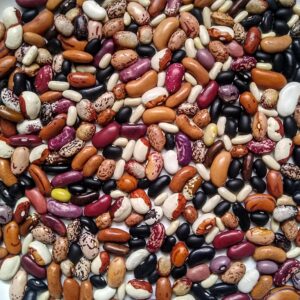
The new comment deadline is May 11, 2015.
Pollen, seed, and plants don’t stay put in agriculture. That’s why contamination by genetically engineered (GE) crops, or GMOs, is a problem for farmers who don’t grow these crops and for the seed and food markets they serve. These operations shoulder testing and prevention costs, and sometimes lose sales.
Why should those at risk shoulder the burden alone?
USDA is accepting public comments following an invitation-only workshop last month on “coexistence.” We watched the event from afar and were disturbed by biased presentations that celebrated GE crops, criticized organic agriculture, and ignored the most important issues at hand, including how to prevent the problem. We believe the USDA must do more to prevent contamination.
Comments are due May 11, 2015
Join us in telling the USDA that:
- This comment period is too short. Planting season is underway, and we need a 60-day extension to ensure that farmers and others interested in the coexistence discussion have ample time to provide comments.
- The coexistence workshop held in March was a lost opportunity for productive discussion and strategy. Because this event failed to achieve its objective, this comment period is that much more important. The USDA needs broad feedback on its activities related to coexistence, especially from those who weren’t invited to the March meeting but are impacted by proposed activities.
- The agency should develop stronger GMO regulations that ensure shared responsibility for contamination prevention. The USDA is beginning the process of updating regulations that govern its oversight of GE crops, as we reported here. Updated regulations should mandate prevention practices on the part of owners and users of GE crops, establish a fair compensation mechanism for those harmed by contamination events, and address the broader economic and environmental issues related to GMOs.
Submit comments electronically at this link. Submit comments by mail to: Docket No. APHIS-2013-0047, Regulatory Analysis and Development, PPD, APHIS, Station 3A-03.8, 4700 River Road Unit 118, Riverdale, MD 20737-1238.
Background:
The USDA is implementing recommendations provided by its Advisory Committee on Biotechnology for 21st Century Agriculture (AC21). These recommendations were published in 2012 and fell far short for protecting farmers. While we support some of these efforts, as explained in our last comments, they fail to include robust regulatory improvements for preventing contamination to begin with and placing responsibility where it belongs: with the patent holders. See: USDA activities already underway and new proposed activities.
You can view webcasts from the workshop held March 12-13, 2015, here: day 1 and day 2.
Other talking points:
USDA cannot rely solely on communication and outreach to farmers – this isn’t enough to prevent contamination. USDA proposes to increase education, collaboration, and outreach on the topic of coexistence. Communication between neighboring farmers is a good thing, but communication alone is not a viable solution to preventing and dealing with contamination. The last thing we need is to pit farmers against each other when communication and prevention fails.
USDA should establish mandatory measures that prevent GE contamination. Voluntary solutions to contamination are insufficient – it’s what we have now and it isn’t working. USDA must mandate best practices to prevent GE contamination by farmers who use GE seed and require concrete contamination prevention measures on their farms to supplement those already used by organic and other non-GMO producers. It costs more money to clean up contamination than it does to prevent it.
USDA should level the playing field. The burden of preventing contamination is currently on organic and other non-GMO operations. Responsibility must be tied to ownership. Those who patent, promote, and profit from GE products should be responsible for preventing contamination and covering damage in cases where prevention fails.
USDA should establish a fair compensation proposal. The patent holder should be responsible for segregation and traceability, from seed to plate. They should be held responsible for the economic and market harm their products cause.
USDA should more fully analyze environmental and economic implications of GE contamination and the implications of managing GE crops. These are also of critical importance to the ideas underpinning “coexistence” – how one system of agriculture can directly and indirectly impact the viability of the other.
